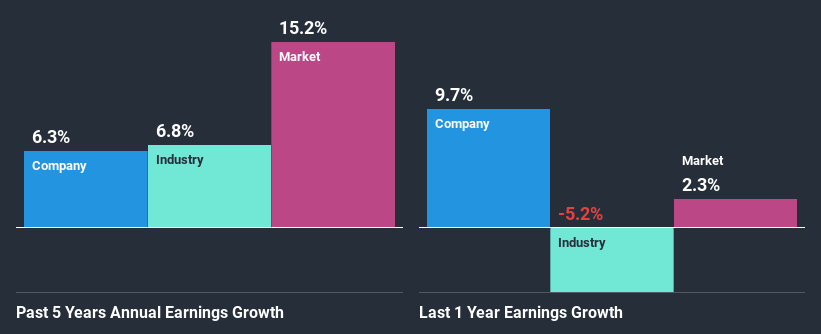Lindsay Australia Limited's (ASX:LAU) Stock Has Shown A Decent Performance: Have Financials A Role To Play?

Want to participate in a short research study? Help shape the future of investing tools and earn a $40 gift card!
Lindsay Australia's (ASX:LAU) stock up by 4.5% over the past three months. As most would know, long-term fundamentals have a strong correlation with market price movements, so we decided to look at the company's key financial indicators today to determine if they have any role to play in the recent price movement. Specifically, we decided to study Lindsay Australia's ROE in this article.
Return on equity or ROE is a key measure used to assess how efficiently a company's management is utilizing the company's capital. Put another way, it reveals the company's success at turning shareholder investments into profits.
Check out our latest analysis for Lindsay Australia
How Do You Calculate Return On Equity?
The formula for ROE is:
Return on Equity = Net Profit (from continuing operations) ÷ Shareholders' Equity
So, based on the above formula, the ROE for Lindsay Australia is:
9.7% = AU$9.3m ÷ AU$96m (Based on the trailing twelve months to December 2019).
The 'return' is the income the business earned over the last year. So, this means that for every A$1 of its shareholder's investments, the company generates a profit of A$0.10.
What Has ROE Got To Do With Earnings Growth?
Thus far, we have learned that ROE measures how efficiently a company is generating its profits. Depending on how much of these profits the company reinvests or "retains", and how effectively it does so, we are then able to assess a company’s earnings growth potential. Assuming everything else remains unchanged, the higher the ROE and profit retention, the higher the growth rate of a company compared to companies that don't necessarily bear these characteristics.
Lindsay Australia's Earnings Growth And 9.7% ROE
At first glance, Lindsay Australia's ROE doesn't look very promising. However, the fact that the company's ROE is higher than the average industry ROE of 7.6%, is definitely interesting. This certainly adds some context to Lindsay Australia's moderate 6.3% net income growth seen over the past five years. Bear in mind, the company does have a moderately low ROE. It is just that the industry ROE is lower. Therefore, the growth in earnings could also be the result of other factors. E.g the company has a low payout ratio or could belong to a high growth industry.
We then performed a comparison between Lindsay Australia's net income growth with the industry, which revealed that the company's growth is similar to the average industry growth of 6.8% in the same period.
The basis for attaching value to a company is, to a great extent, tied to its earnings growth. It’s important for an investor to know whether the market has priced in the company's expected earnings growth (or decline). Doing so will help them establish if the stock's future looks promising or ominous. One good indicator of expected earnings growth is the P/E ratio which determines the price the market is willing to pay for a stock based on its earnings prospects. So, you may want to check if Lindsay Australia is trading on a high P/E or a low P/E, relative to its industry.
Is Lindsay Australia Making Efficient Use Of Its Profits?
While Lindsay Australia has a three-year median payout ratio of 70% (which means it retains 30% of profits), the company has still seen a fair bit of earnings growth in the past, meaning that its high payout ratio hasn't hampered its ability to grow.
Moreover, Lindsay Australia is determined to keep sharing its profits with shareholders which we infer from its long history of paying a dividend for at least ten years. Our latest analyst data shows that the future payout ratio of the company over the next three years is expected to be approximately 70%. Therefore, the company's future ROE is also not expected to change by much with analysts predicting an ROE of 8.8%.
Conclusion
In total, it does look like Lindsay Australia has some positive aspects to its business. Namely, its significant earnings growth, to which its moderate rate of return likely contributed. While the company is paying out most of its earnings as dividends, it has been able to grow its earnings in spite of it, so that's probably a good sign. That being so, a study of the latest analyst forecasts show that the company is expected to see a slowdown in its future earnings growth. To know more about the latest analysts predictions for the company, check out this visualization of analyst forecasts for the company.
This article by Simply Wall St is general in nature. It does not constitute a recommendation to buy or sell any stock, and does not take account of your objectives, or your financial situation. We aim to bring you long-term focused analysis driven by fundamental data. Note that our analysis may not factor in the latest price-sensitive company announcements or qualitative material. Simply Wall St has no position in any stocks mentioned.
Have feedback on this article? Concerned about the content? Get in touch with us directly. Alternatively, email editorial-team@simplywallst.com.

